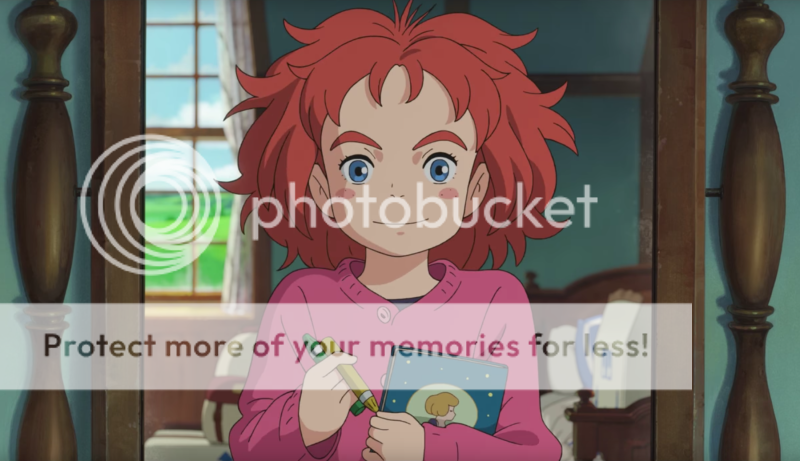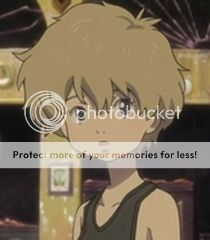If it Walks Like a Ponoc: The Studio Ghibli Effect
So how about that new Studio Ghibli film? I’m not talking about Ocean Waves, although I’m excited to see that too, I’m talking a new and interesting film. I thought it wouldn’t happen, especially with their restructuring situation. Can you say “awesome”? Because I can-
Wait, it’s not Studio Ghibli?
That was my initial reaction when I heard that Mary the Witch’s Flower, a film by recently-formed Studio Ponoc, was slated for this year. To be fair, it’s not hard to make a false assumption; after all, the studio was founded in 2015 by Yoshiaki Nishimura, who was a producer for The Tale of the Princess Kaguya and When Marnie Was There of Studio Ghibli fame. Many of the talent from Studio Ghibli have also migrated to this studio, including director Hiromasa Yonebayashi. It even looks like a Studio Ghibli film visually. And yet it’s 100% not a Studio Ghibli film.
I’d like to discuss a serious issue that’s been plaguing anime discourse. It seems like every time new talent emerges in anime, be it a studio or artist, there’s an inevitable comparison that gets made. It’s been happening for years, and it’s actually doing more harm than good. I’ve tried avoiding discussing this, but as a fellow writer on Infinite Rainy Day has brought up on Twitter on multiple occasions, the elephant in the room can’t be ignored anymore. So, let’s discuss “The Studio Ghibli Effect”.
The Studio Ghibli Effect is when someone or something, regardless of style, is compared to Studio Ghibli and/or Hayao Miyazaki. I first saw it with Mamoru Hosoda in 2012 as The Wolf Children was making its rounds in Japan. Then I saw it with Makoto Shinkai as The Garden of Words debuted in 2013. Then I saw it this past year with Sayo Yamamoto when she finally had a hit with Yuri!!! on Ice. And finally, I saw it directly with Studio Ponoc and their debut film.
Before I can deconstruct the toxicity of this comparison, I need to first discuss the ways in which the aforementioned can be viewed as similar to Studio Ghibli/Hayao Miyazaki. With Hosoda, it’s obvious: both he and Miyazaki make films grounded in some form of reality despite their fantasy settings. Both capture an element of youth not normally seen in anime. Both are enamoured with children and/or teenagers and love using them in their films. And both leave you with a strong feeling of warmth amidst their harsh truths about life.
With Shinkai, it’s less-direct, but both directors love tugging at people’s heartstrings. Both excel at empathy. Both create worlds with details not normally seen in animation, be it human or environmental. Both use these environments as actual characters, albeit indirectly. And both are notorious for sucking in viewers with ambience and atmosphere.
Yamamoto is a vastly different beast altogether, but the one area where she overlaps with Miyazaki is in their commenting on societal indifference to women. Both tend to focus on women and make them the focus of their stories about isolation, sexism or adolescence. This is especially the case in Yamamoto’s characterization of Hana/Hatchin Morenos, a spunky, wide-eyed 9 year-old coming to grips with the harshness of reality. She’s as stubborn as, say, Kiki when it comes to letting Tombo into her life, and as vulnerable as Satsuki when looking for Mei. She acts like a kid, something Miyazaki excels at without much difficulty as well.
Finally, there’s Studio Ponoc. Ignoring what I’ve already mentioned, both seem to have similar styles to their films. Both use girls, particularly pre-teens or teenagers, as conduits for tackling societal expectations of women. Both also favour Western locales and source materials for their films. And both tend to favour inter-splicing fantasy with reality.
All of these comparisons, at least on the outset, appear to be reasonable points of reference for outsiders who love Hayao Miyazaki and Studio Ghibli’s work, but here’s the problem: calling them alike ignores their different approaches to storytelling. Mamrou Hosoda focuses more on writing people like people, instead of characters with human traits, and his films frequently touch on the power of love and family. Makoto Shinkai is the farthest you can get from Miyazaki with his focus on doomed love and failed relationships. Sayo Yamamoto’s portrayal of the scum of society makes her more like Quentin Tarantino than Miyazaki, except more feminine. And Studio Ponoc, while probably the closest to Studio Ghibli/Miyazaki of all of them, will most-likely branch out into something different after their first film.
Even if you ignore these differences, citing every new talent as a clone of something already established is reductive and harmful to the talents themselves. It’s reductive because it detracts from what they excel at, as they’ll always have an unfair bar to strive for and never be judged by their own standards. And it’s harmful because it sets a false precedent of what to expect from them, which is more detrimental to the anime industry than anything that comes from Hayao Miyazaki’s mouth. It’s like that saying goes, “Everyone is special, but if you teach a fish how to climb a tree it’ll spend it’s whole life thinking that it’s stupid.” And while I’m the sure these artists have thick skin over their unwarranted comparisons, they probably would have to, it doesn’t make the saying any less true.
As for Studio Ponoc? I wish them nothing but the best. I know they’ve yet to make their mark, but if their talent is anything to go by it shouldn’t take long for that. Besides, assuming Studio Ghibli has some sort of resurgence in the next few years, we might end up with two studios competing for fame and adoration! Wouldn’t that be swell?
Wait, it’s not Studio Ghibli?
That was my initial reaction when I heard that Mary the Witch’s Flower, a film by recently-formed Studio Ponoc, was slated for this year. To be fair, it’s not hard to make a false assumption; after all, the studio was founded in 2015 by Yoshiaki Nishimura, who was a producer for The Tale of the Princess Kaguya and When Marnie Was There of Studio Ghibli fame. Many of the talent from Studio Ghibli have also migrated to this studio, including director Hiromasa Yonebayashi. It even looks like a Studio Ghibli film visually. And yet it’s 100% not a Studio Ghibli film.
I’d like to discuss a serious issue that’s been plaguing anime discourse. It seems like every time new talent emerges in anime, be it a studio or artist, there’s an inevitable comparison that gets made. It’s been happening for years, and it’s actually doing more harm than good. I’ve tried avoiding discussing this, but as a fellow writer on Infinite Rainy Day has brought up on Twitter on multiple occasions, the elephant in the room can’t be ignored anymore. So, let’s discuss “The Studio Ghibli Effect”.
The Studio Ghibli Effect is when someone or something, regardless of style, is compared to Studio Ghibli and/or Hayao Miyazaki. I first saw it with Mamoru Hosoda in 2012 as The Wolf Children was making its rounds in Japan. Then I saw it with Makoto Shinkai as The Garden of Words debuted in 2013. Then I saw it this past year with Sayo Yamamoto when she finally had a hit with Yuri!!! on Ice. And finally, I saw it directly with Studio Ponoc and their debut film.
Before I can deconstruct the toxicity of this comparison, I need to first discuss the ways in which the aforementioned can be viewed as similar to Studio Ghibli/Hayao Miyazaki. With Hosoda, it’s obvious: both he and Miyazaki make films grounded in some form of reality despite their fantasy settings. Both capture an element of youth not normally seen in anime. Both are enamoured with children and/or teenagers and love using them in their films. And both leave you with a strong feeling of warmth amidst their harsh truths about life.
With Shinkai, it’s less-direct, but both directors love tugging at people’s heartstrings. Both excel at empathy. Both create worlds with details not normally seen in animation, be it human or environmental. Both use these environments as actual characters, albeit indirectly. And both are notorious for sucking in viewers with ambience and atmosphere.
Yamamoto is a vastly different beast altogether, but the one area where she overlaps with Miyazaki is in their commenting on societal indifference to women. Both tend to focus on women and make them the focus of their stories about isolation, sexism or adolescence. This is especially the case in Yamamoto’s characterization of Hana/Hatchin Morenos, a spunky, wide-eyed 9 year-old coming to grips with the harshness of reality. She’s as stubborn as, say, Kiki when it comes to letting Tombo into her life, and as vulnerable as Satsuki when looking for Mei. She acts like a kid, something Miyazaki excels at without much difficulty as well.
Finally, there’s Studio Ponoc. Ignoring what I’ve already mentioned, both seem to have similar styles to their films. Both use girls, particularly pre-teens or teenagers, as conduits for tackling societal expectations of women. Both also favour Western locales and source materials for their films. And both tend to favour inter-splicing fantasy with reality.
All of these comparisons, at least on the outset, appear to be reasonable points of reference for outsiders who love Hayao Miyazaki and Studio Ghibli’s work, but here’s the problem: calling them alike ignores their different approaches to storytelling. Mamrou Hosoda focuses more on writing people like people, instead of characters with human traits, and his films frequently touch on the power of love and family. Makoto Shinkai is the farthest you can get from Miyazaki with his focus on doomed love and failed relationships. Sayo Yamamoto’s portrayal of the scum of society makes her more like Quentin Tarantino than Miyazaki, except more feminine. And Studio Ponoc, while probably the closest to Studio Ghibli/Miyazaki of all of them, will most-likely branch out into something different after their first film.
Even if you ignore these differences, citing every new talent as a clone of something already established is reductive and harmful to the talents themselves. It’s reductive because it detracts from what they excel at, as they’ll always have an unfair bar to strive for and never be judged by their own standards. And it’s harmful because it sets a false precedent of what to expect from them, which is more detrimental to the anime industry than anything that comes from Hayao Miyazaki’s mouth. It’s like that saying goes, “Everyone is special, but if you teach a fish how to climb a tree it’ll spend it’s whole life thinking that it’s stupid.” And while I’m the sure these artists have thick skin over their unwarranted comparisons, they probably would have to, it doesn’t make the saying any less true.
As for Studio Ponoc? I wish them nothing but the best. I know they’ve yet to make their mark, but if their talent is anything to go by it shouldn’t take long for that. Besides, assuming Studio Ghibli has some sort of resurgence in the next few years, we might end up with two studios competing for fame and adoration! Wouldn’t that be swell?





Comments
Post a Comment